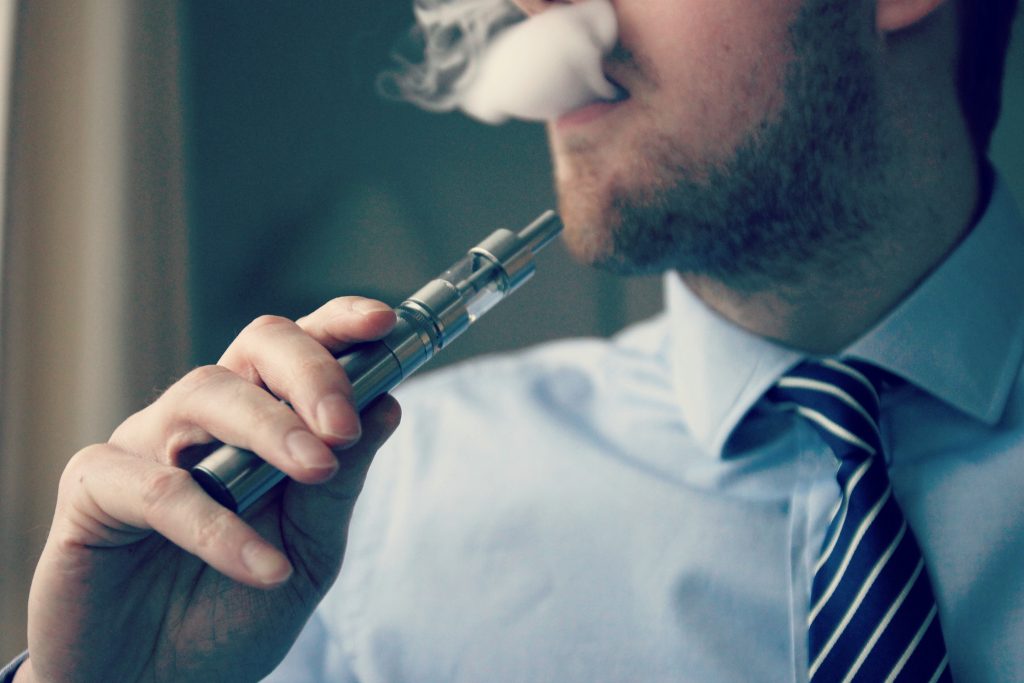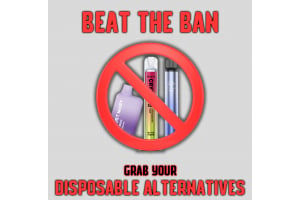The Tobacco Products Directive: Taking the good with the bad
[caption id="attachment_258" align="alignleft" width="474"] Image: WikiCommons[/caption]
Image: WikiCommons[/caption]
As you all might know, the European Union released new controls on vaping recently, which comes with a whole host of restrictions around what you can and cannot buy. There has been a huge backlash again the polices, but we aren't here to start banging the war drums.
The Tobacco Products Directive is here to stay, and we need to start looking at what it can do for us in the UK rather than what it may be taking away.
But first lets look at why it happened. Why has vaping been hit with these controls after numerous medical bodies have gone on record saying that vaping is the best way to safely quit smoking? The reality of the matter is that we don't have a clear answer, but we can speculate.
The first reason is simply taxation. The government takes enormous amounts of money from taxing tobacco imports and manufacturing, which has bought in a sizable amount of wealth both for the UK and the people who live within it's borders. Vaping has gone under the radar and has remained free of much of the taxes that directly affects tobacco, so there is the chance that TPD is a way to prepare vaping imports for tax.
Secondly is the fact the government wants to present a positive public image by coming down hard on any new form of smoking. Simply put, they don't want to be the guys that encouraged a new bad habit to develop, at least in their eyes. That’s politics, folks!
So back to the main point; is TPD bad? Not really no, in many ways it benefits us all. But only if you look a little deeper than the surface value may hint at. Here are a few of the ways it will make a change to your vaping in the coming months.
Refill bottles can be 10ml only:
This is the change that angered the most people, for obvious reasons. No longer will you be able to buy any bottle of liquid larger than 10ml.
How could this be good you ask? The reason it might be for the best is not about what has changed, but what hasn't. They haven't got rid of liquids, or removed flavors entirely, they have just made them come in smaller bottles. Prices may increase slightly because of manufacturing costs, but this change is no more than an annoyance rather than a turn for the worst.
Tanks are smaller and must be leak free:
Why this change is for the best should be obvious, at least for the leak free part. Having tanks that cannot leak, such as the new Kanger CL and Nautilus X, means that you won't find yourself dealing with nicotine rich juice flowing over your hands or ruining your brand new jeans. This has been a long time coming and will make vaping much less of a hassle.
As for smaller tanks, we can't offer too much in the way of a positive, other than the fact that tanks will theoretically benefit from more controlled manufacturing and quality checks due to the complexities in developing smaller tanks. It may be a long shot, but at the moment its the best we've got.
No more 24mg strength e-liquids:
This particular change has a hidden benefit that might not seem obvious. 24Mg is rarely used nowadays apart from long term smokers, and the removal of this strength will force many to drop a nicotine strength down to 18mg. With luck and perseverance it may well help those who find it next to impossible to lower their nicotine intake to come down to lighter levels and bridge a proper path to quitting fully.
All liquids must feature warning signs similar to tobacco products and be child proof:
This idea may be the hardest to sell, as placing warning sings over e-cig juices is in may ways unjustified. Despite the fact that research into the long and short term effects of consuming e-liquid has been overwhelmingly positive, we are now being forced to display negative labeling that could put off potential users. We can't fully endorse the idea until some research displays evidence to the contrary, but we don't make the laws now, do we.
So how can this be possibly good? Again, this comes down to theory rather than any real rock solid evidence. Off putting labeling won't change the minds of long term users or long term smokers who know the improvements vaping makes to your lifestyle and health.
Who it will stop is those who don't need to start vaping, such as non-smokers and under-aged users. While non-smokers are well within their rights to start vaping, we do caution them against bringing nicotine into their system, where it was otherwise absent. Nicotine is fun for some and a vice for others, so buyers must be aware of the potential consequence that await causal use, and warning labeling may be a good way to prevent the wrong user from getting involved.
When it comes to under aged users, it is strictly forbidden for anyone below the age of 18 to buy vaping tools, but that doesn't mean they can't get their hands on it. New health warning, no matter how accurate they turn out to be, will hopefully reduce the number of younger users out there. Child proof packaging will be required and will increase the safety of having products around the home, especially when young children are present. All in all, it is hardly the worst thing that could have happened.
There are a large amount of changes in vapings future to consider, but not all of them are going to be to your detriment. We haven't even covered the more stringent controls of e-liquid manufacturing, which will ensure they are better made and safer to use, or the fact that stores like ourselves must be provided with extensive ingredient checks.
TPD is a pain, but a pain we can all live with. So don't worry; vaping isn't going anywhere.
















